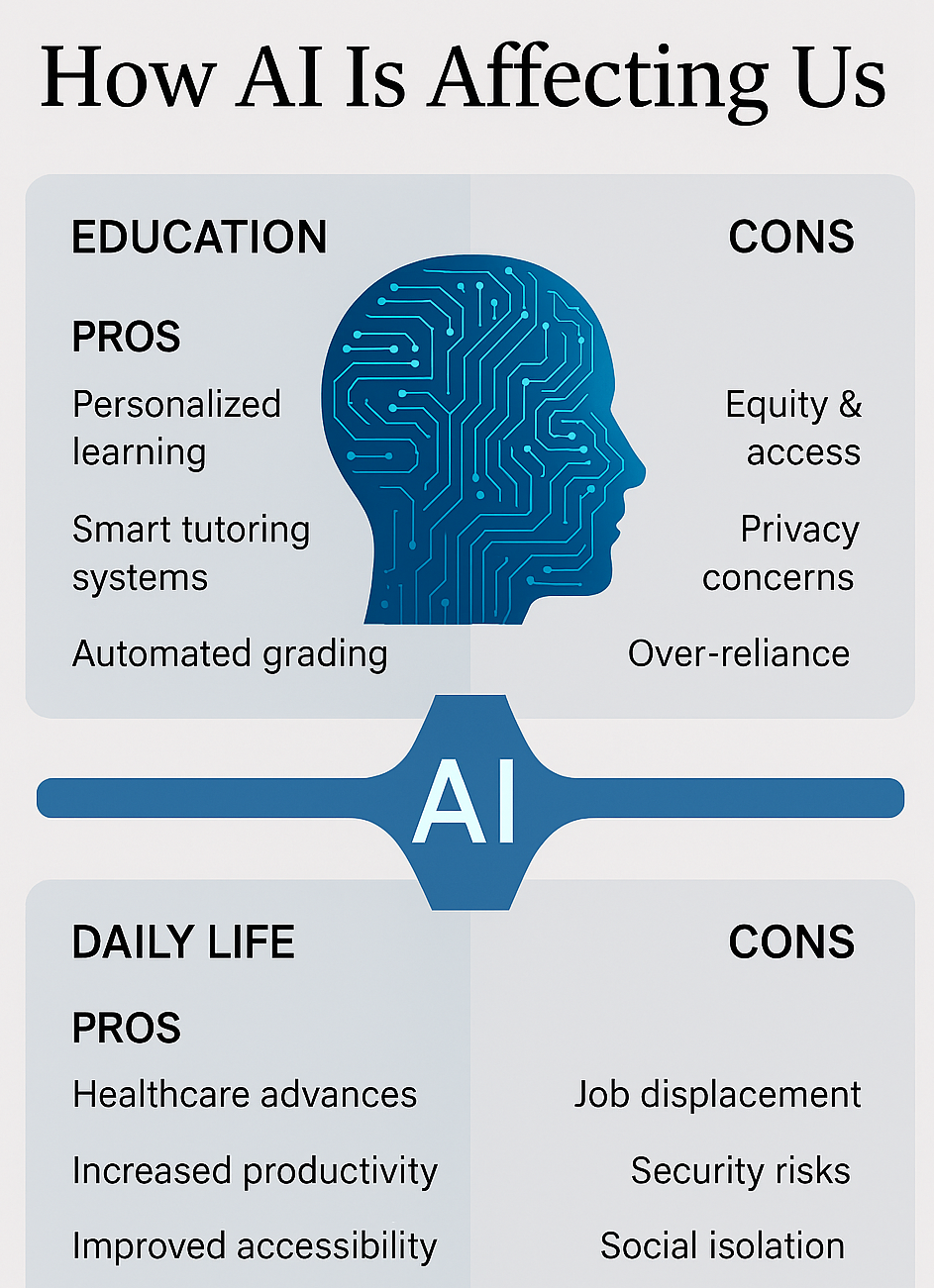
How AI is Affecting Us: A Double-Edged Revolution
Artificial Intelligence is no longer science fiction—it’s the subtle force influencing everything from the way we shop to how we’re diagnosed at the doctor’s office. And while the benefits are groundbreaking, the implications deserve just as much attention.
The Bright Side of AI
AI is helping us live smarter and healthier:
- Healthcare: Algorithms can detect diseases earlier and more accurately than ever before.
- Productivity: AI tools automate routine tasks, freeing humans for more creative, strategic work.
- Accessibility: From voice assistants to real-time translation, AI is breaking down barriers for people around the world.
The Shadows We Must Face
But every innovation casts a shadow:
- Job Disruption: Automation threatens roles in manufacturing, transport, even customer service.
- Privacy: Our digital footprint is mined and monetized in ways many don’t fully understand.
- Bias: AI can reflect and even amplify societal biases if not carefully designed and monitored.
Where Do We Go From Here?
The key isn’t to halt AI’s progress—it’s to steer it with intention. By demanding transparency, investing in education, and designing ethical systems, we can ensure that AI enhances rather than diminishes the human experience.
AI impacts in education :
Positive Impacts of AI in Education
- Personalized Learning: AI tailors lessons to each student’s pace and style. Whether you're a visual learner or someone who needs extra practice, AI can adapt content in real time to suit your needs.
- Smart Tutoring Systems: Virtual tutors are available 24/7, offering explanations, quizzes, and feedback—like having a personal coach on demand.
- Automated Grading & Admin Tasks: Teachers can offload repetitive tasks like grading or attendance tracking, freeing them to focus on teaching and mentoring.
- Accessibility: AI tools like speech-to-text, real-time translation, and adaptive interfaces help students with disabilities or language barriers engage more fully.
- Data-Driven Insights: AI can analyze student performance trends and help educators intervene early when someone’s falling behind.
Challenges and Considerations
- Equity & Access: Not all students have equal access to AI-powered tools, especially in under-resourced areas.
- Privacy Concerns: AI systems collect a lot of data, raising questions about how student information is stored and used.
- Over-Reliance: There's a risk of students becoming too dependent on AI, potentially weakening critical thinking or problem-solving skills.
In short, AI is like a double-edged chalkboard—it can illuminate learning in ways we never imagined, but it needs thoughtful use and ethical guardrails to truly benefit everyone.
